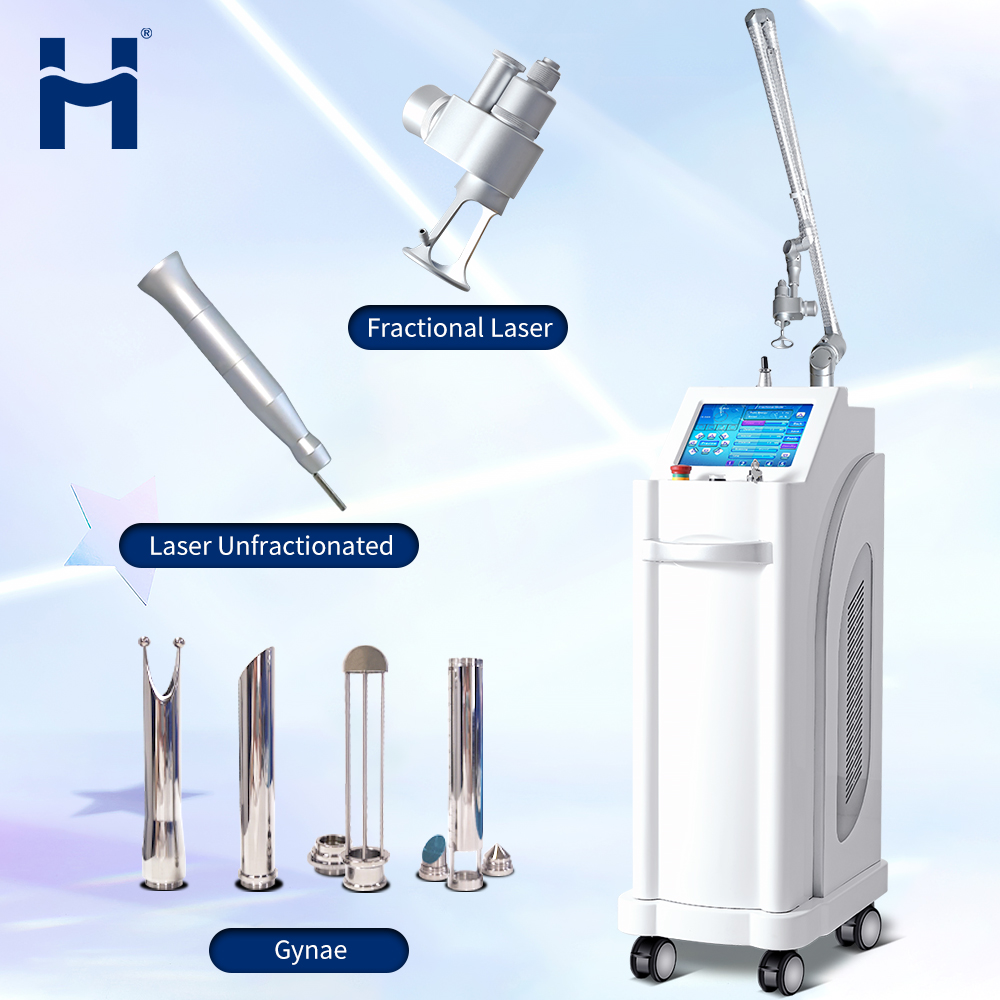The Effectiveness of Slimming Machines: Cryolipolysis, Inner Ball Roller, VelaShape, and Vacuum Technologies
December 29, 2025Comparison of Thulium Laser and CO2 Laser in Medical Applications: A Comprehensive Analysis
August 04,2025
Laser technology has revolutionized modern medicine by providing minimally invasive, precise, and efficient solutions for various clinical applications. Among the plethora of laser systems available, thulium (Tm) lasers and carbon dioxide (CO₂) lasers are two of the most widely used due to their unique properties and therapeutic advantages. This article provides a detailed comparative analysis of Tm lasers and CO₂ lasers, examining their mechanisms, clinical applications, safety profiles, and future prospects.


1. Mechanism and Physical Properties
1.1 Wavelength and Tissue Interaction
- Thulium Laser
- Emits a wavelength of 1927nm, which is highly absorbed by water (~120 cm⁻¹). This results in shallow tissue penetration (~0.1 mm), making it ideal for precise and controlled ablation.
- Operates in pulsed mode, minimizing thermal damage to surrounding tissues and reducing carbonization.
- CO₂ Laser
- Emits a wavelength of 10600nm, which is also strongly absorbed by water (~150 cm⁻¹) but penetrates deeper (~0.3 mm).
- Can be used in both continuous and pulsed modes, with the former providing deeper coagulation and vaporization.
1.2 Energy Delivery and Thermal Effects
- Thulium lasers are known for their efficient energy delivery, with lower thermal spread, reducing the risk of unintended tissue damage.
- CO₂ lasers generate more heat, making them suitable for procedures requiring deeper tissue ablation but increasing the risk of thermal necrosis.
2. Clinical Applications
2.1 Dermatology
- Thulium Laser:
- Preferred for fractional resurfacing, acne scar revision, and fine wrinkle treatment due to its precision and minimal downtime.
- Associated with transient erythema but lower risk of scarring.
- CO₂ Laser:
- Superior for deep wrinkle removal, actinic keratosis, and severe skin lesions.
- Higher risk of post-operative hypopigmentation and prolonged healing (7–14 days).
2.2 Urology (e.g., Benign Prostatic Hyperplasia – BPH)
- Thulium Laser (Ho:YAG):
- Vaporizes prostatic tissue with excellent hemostasis, reducing intraoperative bleeding.
- Preferred for enucleation due to precise tissue removal.
- CO₂ Laser:
- Effective but less commonly used due to higher bleeding risks and thermal damage to surrounding structures.
2.3 Otolaryngology
- Both lasers are used for vocal cord surgeries, but thulium lasers are associated with reduced postoperative edema and faster recovery.
3. Safety and Complications
- Thulium Laser:
- Lower risk of scarring, hypopigmentation, and thermal damage.
- Potential for transient dysphonia in laryngeal procedures.
- CO₂ Laser:
- Higher risk of prolonged healing, scarring, and rare but severe complications like laryngeal stenosis.
4. Future Perspectives
Hybrid laser systems combining both wavelengths may emerge, leveraging thulium’s precision and CO₂’s depth for complex procedures. Advances in fiber-optic delivery could further enhance thulium laser applications.
Conclusion
Thulium lasers excel in precision and minimal invasiveness, whereas CO₂ lasers are unmatched in robust tissue ablation. The choice between them depends on the clinical scenario, desired outcomes, and patient-specific factors. Future research should focus on optimizing hybrid systems to harness the strengths of both technologies.